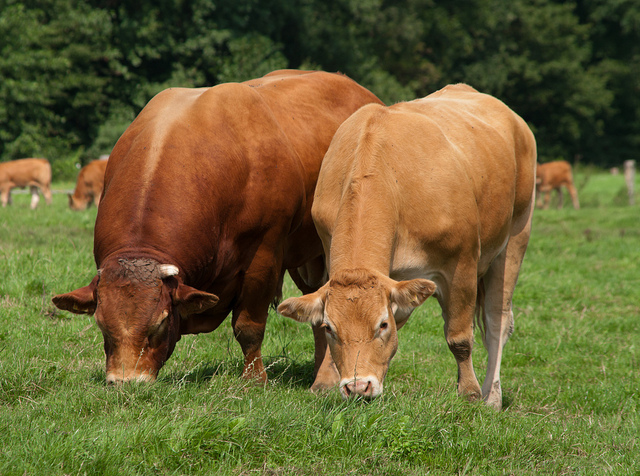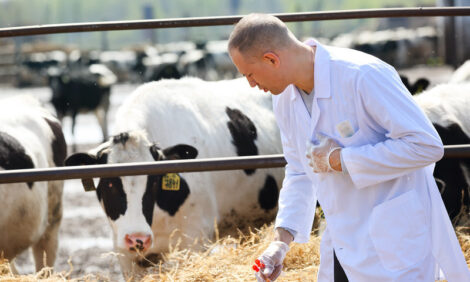



Check Bull Fertility Before the Breeding Season
It won’t be long until breeding season for herds that calve in the spring, and it is never too late to start planning, advises University of Arkansas Professor and veterinarian, Jeremy Powell.Improvement of next year’s calf crop is dependent upon the breeding decisions you are about to make, writes Professor Powell of Arkansas University.
Herd sire selection should be a thought-provoking and profit-driven decision process, he adds.
Males account for approximately 90 percent of the gene pool, contributing more to the genetic makeup of a herd in one breeding season than a cow contributes in her lifetime.
Selecting genetically superior sires is the fastest approach to herd improvement and, ultimately, bottom line profitability.
*
"Sire selection should
target an acceptable
combination of traits
that complement the
strengths and weaknesses of the cow herd and match markets."
Not every bull will fit your production scenario. Resources and goals are different for each cow-calf operation. Nonetheless, sire selection should target an acceptable combination of traits that complement the strengths and weaknesses of the cow herd and match markets.
Ask questions that pertain to your particular production situation.
- What are your target markets?
- Are you selling all calves at weaning?
- If so, what color does that market value the most?
- Are you planning to background your calves and send them through the feedlot?
- Are you going to retain any replacement heifers?
- Are you breeding both heifers and cows?
- What are your available labor and forage resources?
Answers to these questions will aid you in determining the selection efforts you may want to apply towards economically important traits such as growth, carcass traits and possible maternal per formance. Feet and leg sound ness, libido, disposition, scrotal size, sheath, frame size, composition, breed type and horn presence or absence are also important traits for consideration.
While one may apply more pressure on one or two traits, remember to strike a balance among various traits and avoid extremes. Base the type of sire selected on the purpose of your breeding plan.

While I strongly believe in the correct visual appraisal of an animal, the use of genetic selection with expected progeny differences (EPD) can be an extremely valuable tool.
EPDs provide predictions of the expected performance of the calves sired by a bull compared to the expected performance of calves sired by another bull.
EPDs are the best predictors of the genetic performance of an individual animal, and they are available for a growing number of economically relevant traits.
Breeds are different and make avail able a wide variety of EPDs, how ever; most breeds have basic EPDs, such as birth weight, weaning weight, yearling weight and milk. A large number of breed associations have implemented the use of selection indices.
These are based on multiple traits weighted for economic importance, heritability and genetic associations among traits. A selection index may provide a balanced selection approach when selecting for more than one trait at a time.
Beef cattle selection should be based on many factors.
The knowledge gathered from your production needs and concerns is invaluable in your sire selection endeavor. The more information used in this process, the fewer surprises you will have for generations to come.
It is important to use both performance information and visual appraisal in choosing a sire that suits you and your production goals. They should complement each other. A balanced approach to sire selection, focusing on multiple economically important traits, can go a long way towards herd genetic improvement.


